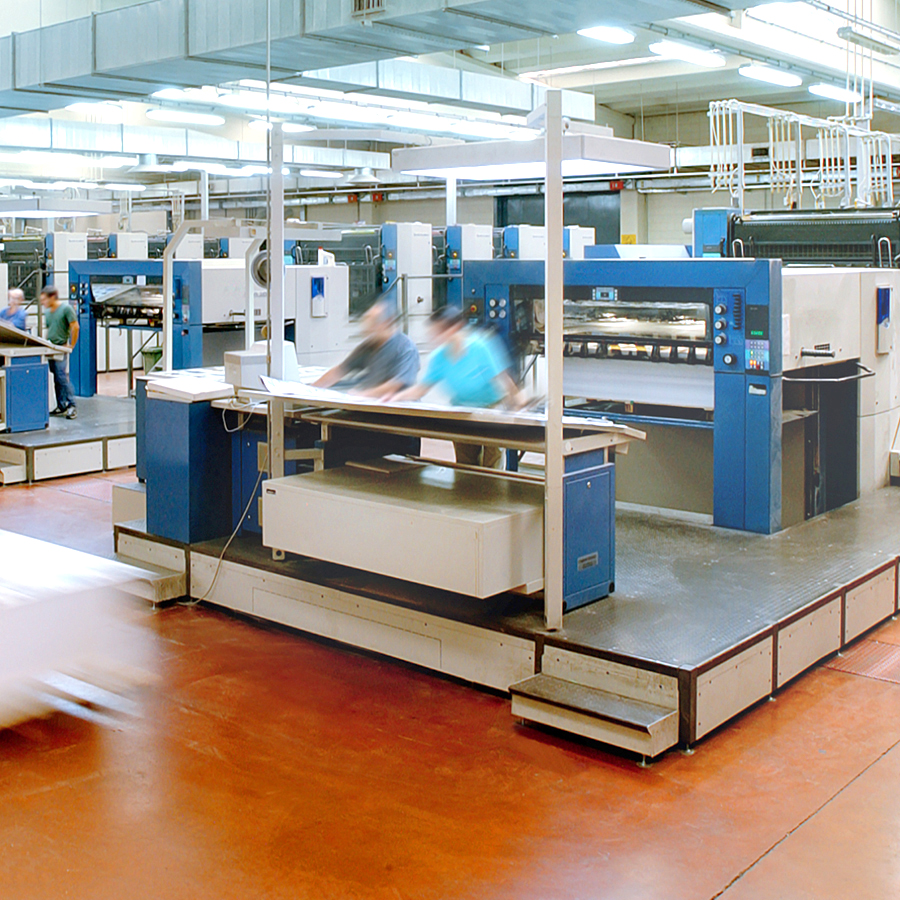Success Stories
Every assignment has its own unique elements, but many of the same elements are present in much of the work we do. Clients occasionally approach us to deal with a single issue, but more often they’re facing complex issues that have resisted solution.
We offer below a representative sampling of the kinds of projects we have undertaken and the results achieved — shortened and simplified, with details obscured to ensure confidentiality.
Merger & Acquisition Stories

A New York printer wanted to retire
He had built a profitable niche in the specialty packaging area — producing boxes for games and toys. But it was time to spend some time enjoying the rewards of his efforts — doing more travelling and spending time with grandchildren.
We found a larger printer in the area who was interested in the company’s market niche. They wanted to build on the seller’s position in the market and specialized production capabilities. We arranged a cash sale that had the double benefit of generating extra value by freeing up the company’s real estate.

A Northeastern business needed a new owner when its CEO died unexpectedly
A business was in its third generation of family management but had no logical candidate to become CEO. The company was well-positioned in a growing geographic market but had no immediate path forward.
Instead of limping along, the family decided to explore the possibility of a sale. We found a fast-growing buyer who needed the seller’s large-scale operations to sustain their growth plans. The buyer made an all-cash purchase, entered into a long-term lease of the company’s real estate, and provided real opportunities for four of the family members who wanted to continue working. (After representing the seller in this transaction, we were later retained by the buyer in several subsequent transactions.)

A private equity firm acquired a large printing company but wanted to pursue even more aggressive growth
The printing company was growing quickly, but was limited by its physical plant. The disruptions of relocating presented some real operating challenges.
We identified a prospective seller nearby, with the space and capabilities to accommodate both operations . Combining operations in several steps permitted immediate growth without many of the added costs and disruptions of relocation. (We also worked on the post-merger integration. Within nine months, consolidating the two operations generated one-and-a-half times the savings that had been projected.)

A very successful Arizona company had grown as far as the owner felt comfortable
Even though the company was quite profitable, the operation needed a major technology upgrade. The owner was concerned about the costs and risks of such a big decision, and wanted to explore taking his chips off the table .
We identified a buyer that was eager to buy the entire company. But the owner was so excited about future prospects that he retained a minority interest and continued working as President. He retired a few years later and sold his remaining interest for twice the valuation in the earlier transaction. (We later represented the company in selling to a national industry consolidator.)

A Florida printer was unwilling to invest in newer production capabilities
Two of the owners were no longer active in the business and wanted to cash out. But one of the owners wanted to continue working.
We arranged a cash transaction, with substantial added incentives for the remaining partner, who helped to relocate the company’s operations into the acquiring printer’s operation. The deal permitted the owners to dispose of their desirable real estate, generating added liquidity, while still offering an upside for the remaining partner — who continued to work successfully for the acquiring comnpany..

A California printer was facing opportunities that required much larger capacity and broader capabilities
The CEO had uncovered a major new source of business that went far beyond his company’s sheetfed capabilities. It would require two heat-set webs about 20% of the time — not enough to justify purchasing the equipment, but too much to depend on subcontractors,
We found a printer with the horsepower (and unused capacity) required to exploit the new opportunities and negotiated an advantageous sale that provided the former owner with cash and a substantial continuing income opportunity from his increased sales.

A family holding company owned a printing operation that was no longer a core business
Over many decades, the family had come to own a variety of companies in different industries. But printing and newspapers were no longer central parts of the family’s plans.
The requirements were simple: sell the printing company with no complications or contingencies of any kind. We negotiated an all-cash sale, with a substantial added benefit: the company was occupying valuable real estate in a prime location. The transaction created substantial immediate liquidity, while also making the real estate available for development.
More Success Stories

A substantial printer was getting less than 60% of the production they needed from their nine digital presses
There were no apparent problems with the presses themselves. The bottleneck lay in a clunky workflow that made it impossible to move smoothly from one job to the next.
We developed a more logical approach that removed the workflow impediment, and within two weeks the new process increased press throughput more than 40% — with no new equipment or changes in staffing. (Their bindery was quickly overwhelmed by the increased press throughput — a very high-class problem, indeed!)

A successful printer was struggling to grow as fast as they wanted
They were clearly being held back by dealing with a large number of small clients. We sharpened their focus on more substantial accounts, helping them to define what a good account looked like and using modern marketing tools to learn about target accounts.
They built a very distinctive sales discovery process and adjusted their salesforce’s incentives — to encourage them to focus on worthy accounts. There were no heroic transformations, but within eighteen months their client list was fundamentally reshaped, and they had grown 25%, with profits increasing even more sharply.

A printer was having difficulty keeping up with customers’ demands
During peak sales periods, CSRs were struggling to keep up with their daily work. The company was disappointing customers and salespeople every day.
Their order-entry process had too many steps and too many hand-offs. They used the same workflow for small and easy jobs as they did for more complicated jobs, and they had missed major opportunities for automation and workflow simplification. Within 90 days they had fundamentally reshaped their workflows. Schedules were no longer a crisis, customers were happier, and salespeople no longer could use production problems as an excuse for not bringing in new business.

A growing printer was too dependent on their largest client
We encouraged them to focus on other clients with similar needs. The market niche fit their capabilities very well, so we created an inbound marketing program focused on the target industry and developed a sales discovery process that clarified prospects’ needs and priorities.
They soon developed three very promising new clients within the target market — doubling their sales to that industry vertical in less than two years . And overall sales picked up as well, as their salesforce put their sales discovery process to work with all of their prospects.

A CEO was simply too busy to make progress on her major projects
She had become a prisoner of other people’s priorities — and her struggle was made worse because she wasn’t getting the quality of help she needed from her managers.
We showed her how to break the logjam by setting clear priorities — for herself and for her staff — with realistic timeframes and measurable objectives that made it easier to hold people accountable for results. We also showed her ways to break big projects into manageable pieces. Like all CEOs, she was still subject to conflicting demands on her time, but she was no longer a prisoner.

A top quality printer was struggling to overcome a few problem sales months every year
Their peak months required them to maintain substantial excess capacity, and they drowned in their quiet months. The pattern repeated year after year,
We analyzed their sales patterns and found two 45-day periods that were predictably slow. We developed a capacity model that used price to bring in added business from carefully-selected accounts. The problem months didn’t set any sales records, but they did far less damage to the year’s results, and some of the added business turned into repeat work that helped to smooth out other months as well.

A printer wasn’t getting the productivity they expected from their new equipment
After a few days of observation, we concluded that the problems stemmed from a lack of coherent production standards. Managers were too busy getting the day’s work out to set and enforce clear expectations for productivity, so operators lacked a clear sense of what they were accountable for producing,
We helped them to clarify standards and expectations, provide feedback on results and train those who needed help. Within six months, new equipment productivity was close to original expectations — and productivity on existing equipment had shown substantial gains as well.
Every client is different, and we take special care to understand those differences. Let’s set up a 20-minute chat — to discuss your key issues and determine if there are ways in which we might be helpful.



